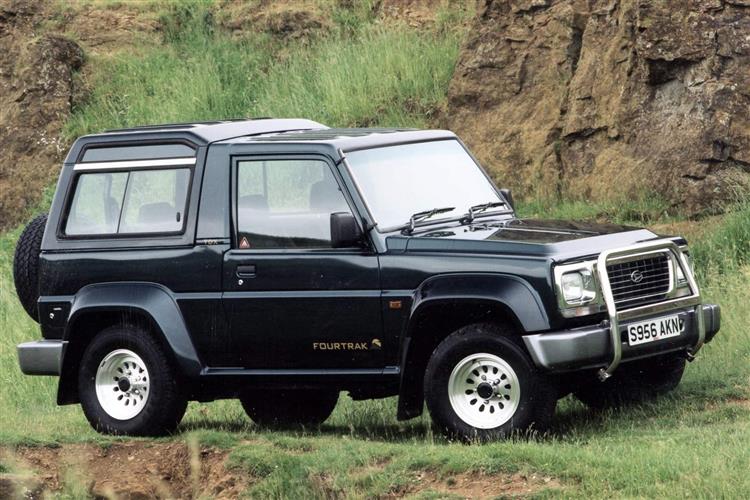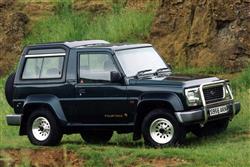AFFORDABLE 4X4 FUN (some text hidden) --NONE--
BY CLAIRE EVANS
Introductionword count: 123
If you want to buy a well-built and capable used off-roader, but don't want to pay the premium necessary for vehicles with a Land Rover badge on their bonnet, then you might consider a Daihatsu Sportrak. Priced from £9.995 when new, Daihatsu claimed its Sportrak soft top and station wagon estate line-up represented the bank manager-friendly face of four-wheel drive motoring. On the second-hand market, prices of this obsolete model are very reasonable, thanks to the ever increasing competition from a wide range of car makers. The first Sportrak models were rather basic and utilitarian compared with today's lifestyle machines. But in recent years the 4x4 was freshened up with improved engines and suspension and trim upgrades making it a more appealing proposition.
Modelsword count: 54
Models Covered: First generation Sportrak - 1989-1990 1.6 three-door station wagon and soft top [EL, DX]. Second generation Sportrak - 1990-19911.6 three-door station wagon and soft top [EFi]. Third generation Sportrak - 1991-19931.6 three-door station wagon and soft top [EXi, ELXi]. Fourth generation Sportrak - 1993-1998 1.6 three-door station wagon [Xi, Xi-SE, EXi, ELXi]
Historyword count: 220
The first Sportraks arrived in the UK way back in 1989 and offered basic off-road petrol-powered transport in short wheelbase three-door soft top and station wagon estate form. The soft-top DX had a full-length removable hood, while the station wagon EL featured a detachable rear hard top and sunroof panel. Both versions were offered with the same 16-valve 1.6-litre engine. In 1990, they were replaced by the more user-friendly 1.6 EFi versions, which boasted a fuel-injected, catalyst engine and power steering. Within a year, these too were discontinued, this time in favour of the STi soft top and ELi hard top. The differences here were largely cosmetic, the later models gaining larger bumpers, with restyled tail lamps incorporated into the rear, plus a new front grille and a split/folding rear seat. This pair continued until 1993 when Daihatsu started to turn its little off-roader into more of a lifestyle machine. The soft-top version was killed off, and in the following years the Xi, Xi-SE, EXi and ELXi variants gained more sophisticated equipment. Electric windows and mirrors, a removable sunroof, central locking and a decent face-off stereo all became standard items on the inside. Meanwhile, exterior styling was enhanced with alloy wheels that sat under wider, flared wheel arches. Imports stopped in 1998 and the final examples are on R plates.
What You Getword count: 141
The final range included three models, all powered by identical 1.6-litre 16-valve engines. The flagship ELXi offered wider wheels and tyres under extended arches, as well as an RDS audio system, electric mirrors and luxury interior trim plus power steering and a removable sunroof. However, in its final form the price leader Xi had no rear seats, making it what the importers called 'a versatile load and people carrier'. If you do want to carry more than two people, check you're getting the optional dealer-fit extra row of seats. In comparison, the Xi-SE came with split folding rear seats, central locking, electric windows, additional instrumentation and a Pioneer audio system. Thoughtful touches included interior releases for the fuel flap and tailgate, remote control door mirrors and an immobiliser security system. Popular options were metallic paint, multi-play CD system and leather upholstery.
To see the full road test text contact us on 0330 0020 227
Pictures (high res disabled)


|
Scoring (subset of scores)
Category: Crossover or SUV 4x4s
| Performance | |
| Handling | |
| Comfort | |
| Space | |
| Styling, Build, Value, Equipment, Depreciation, Handling, Insurance and Total scores are available with our full data feed. | |



